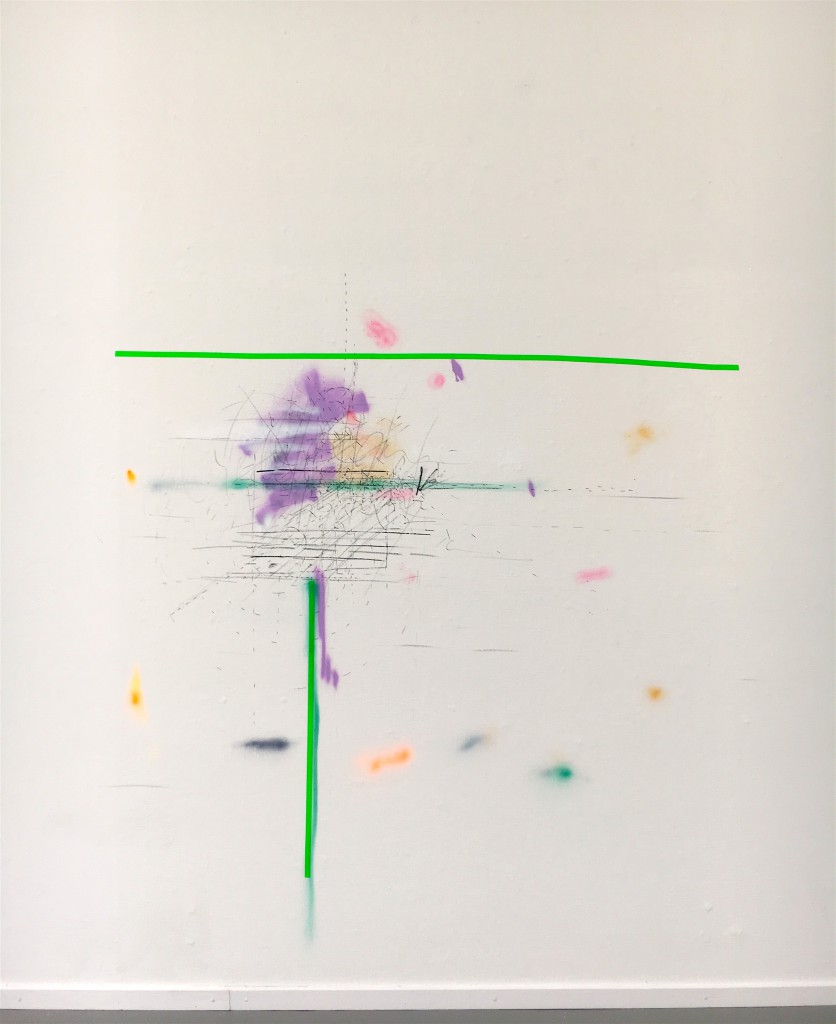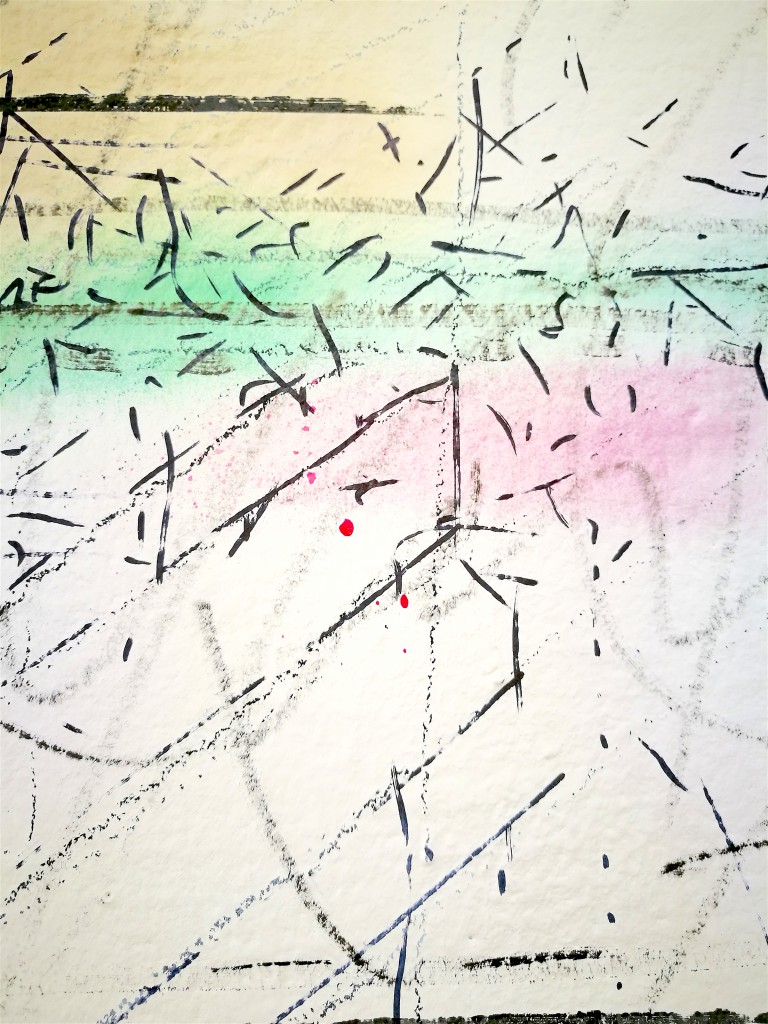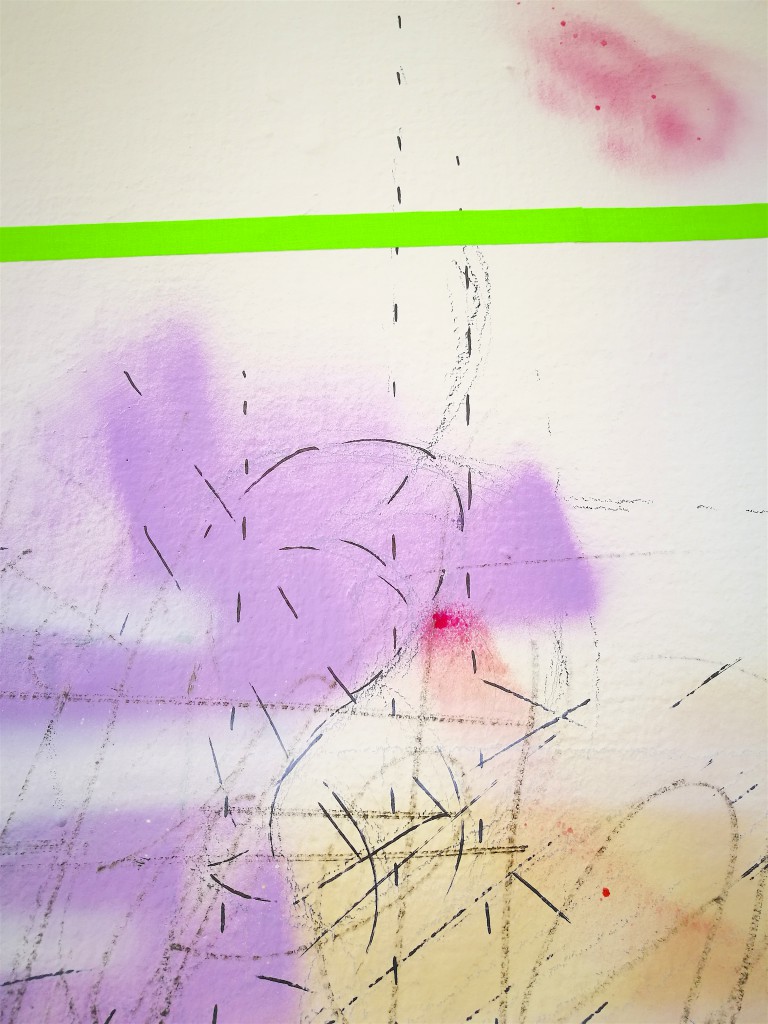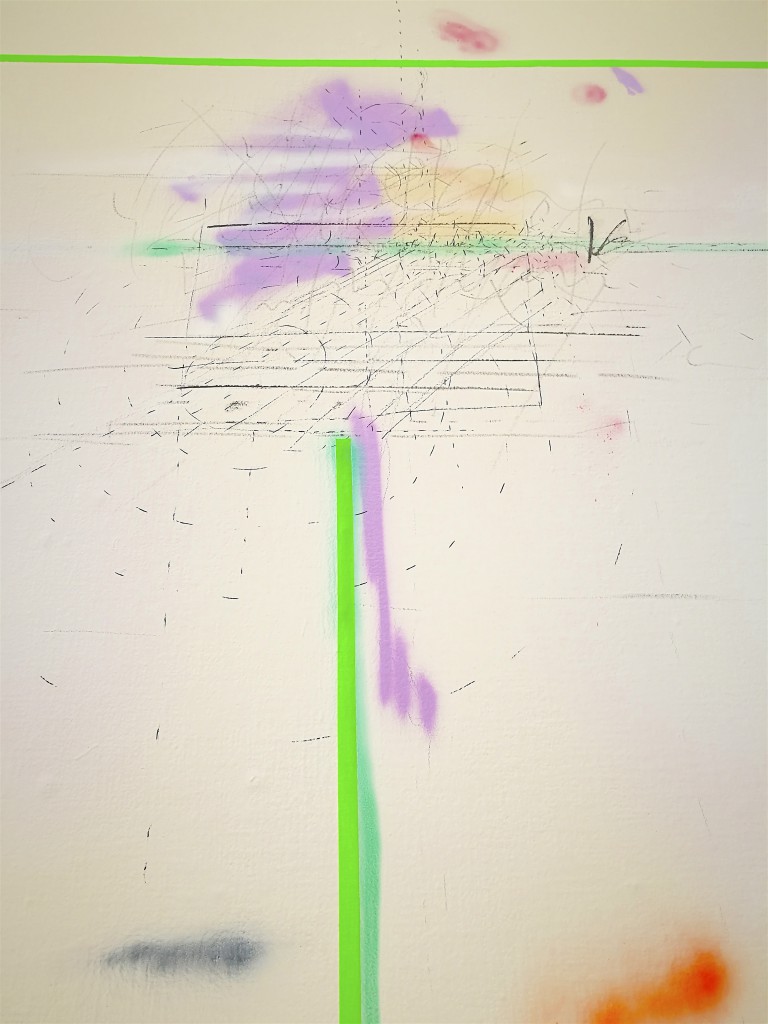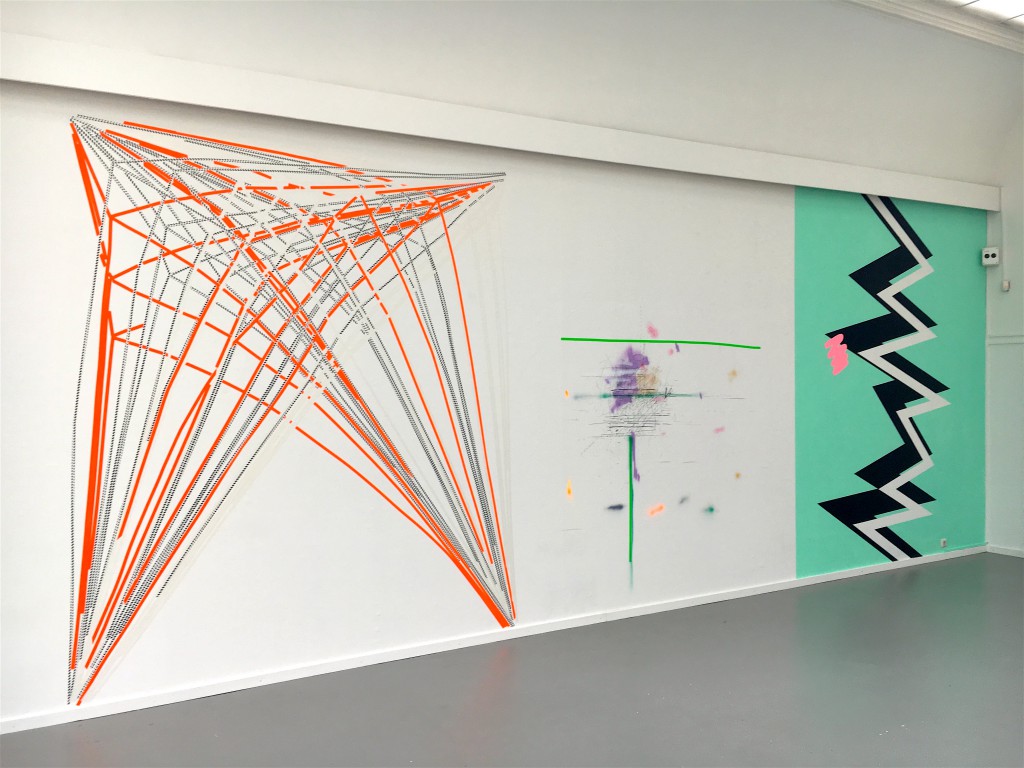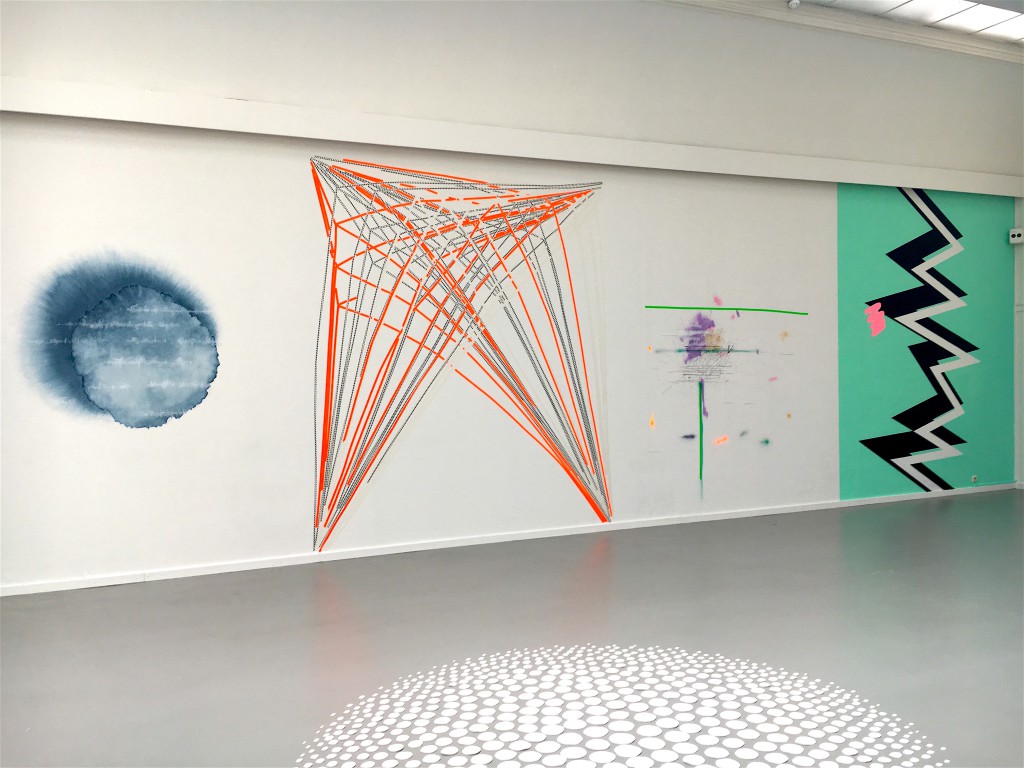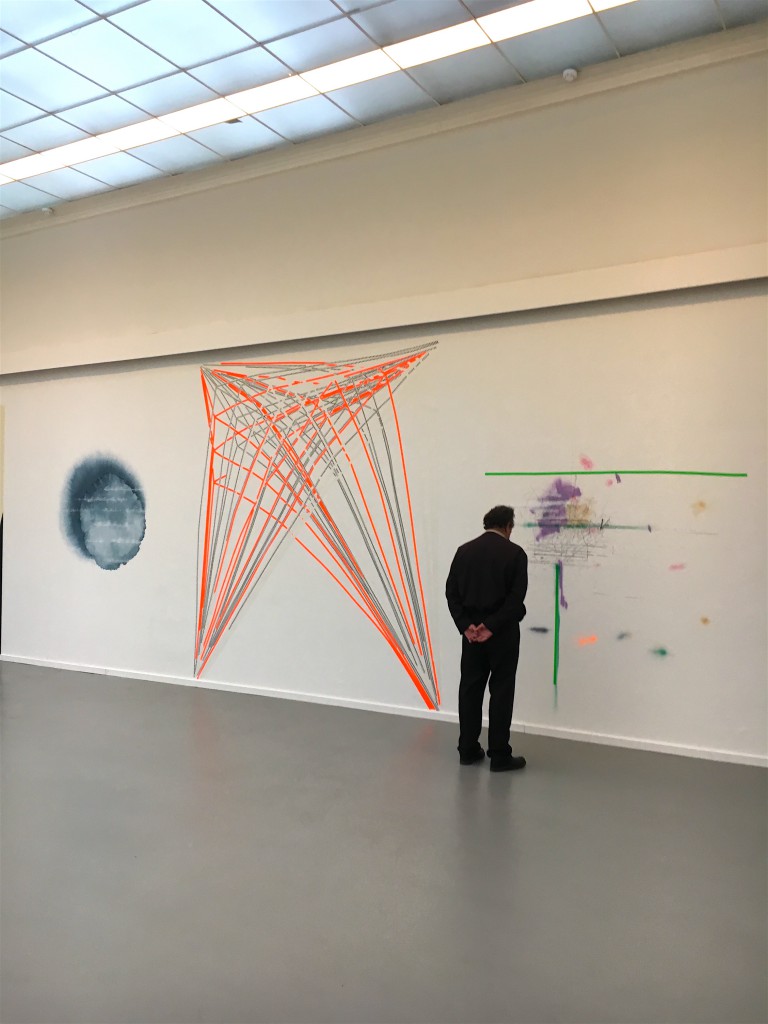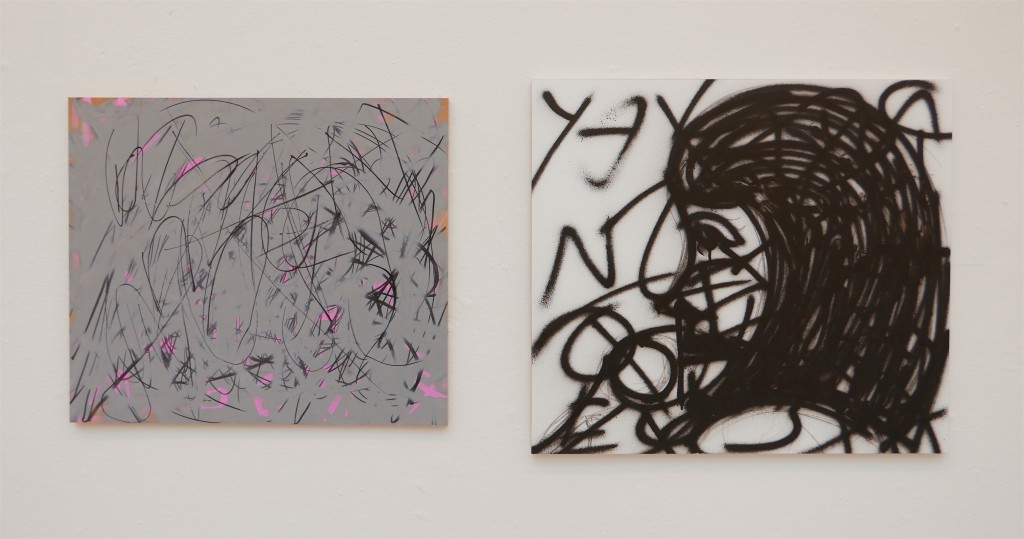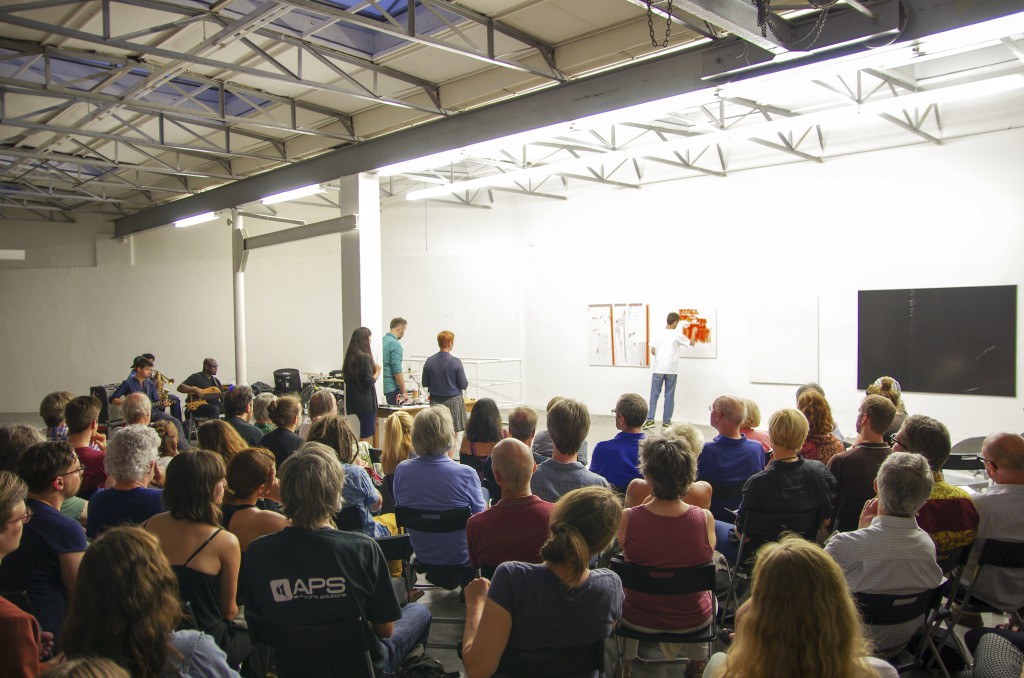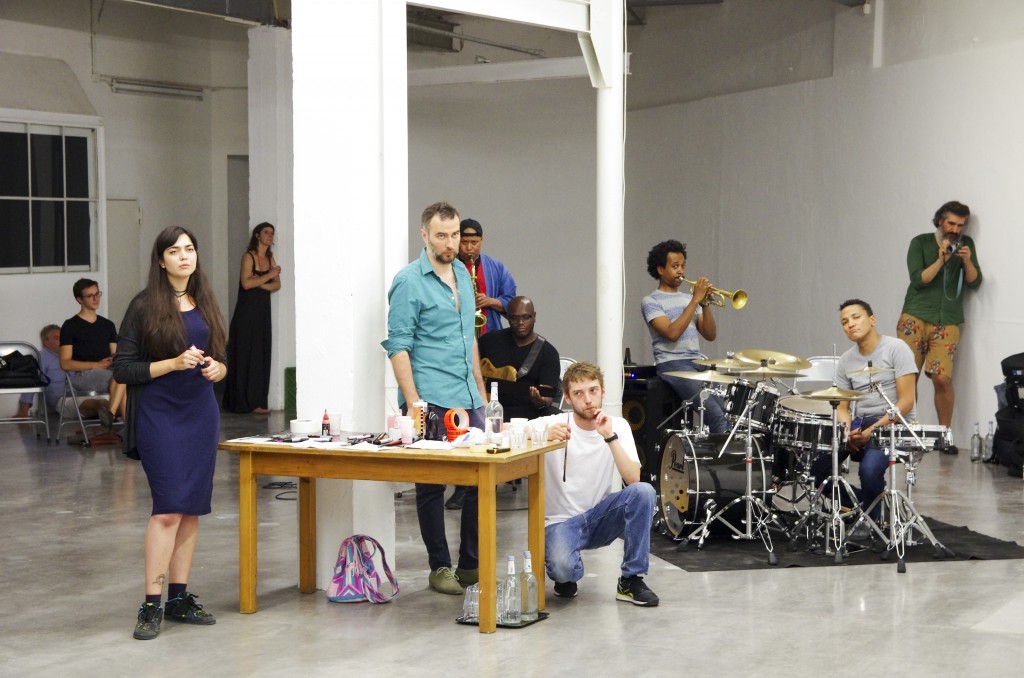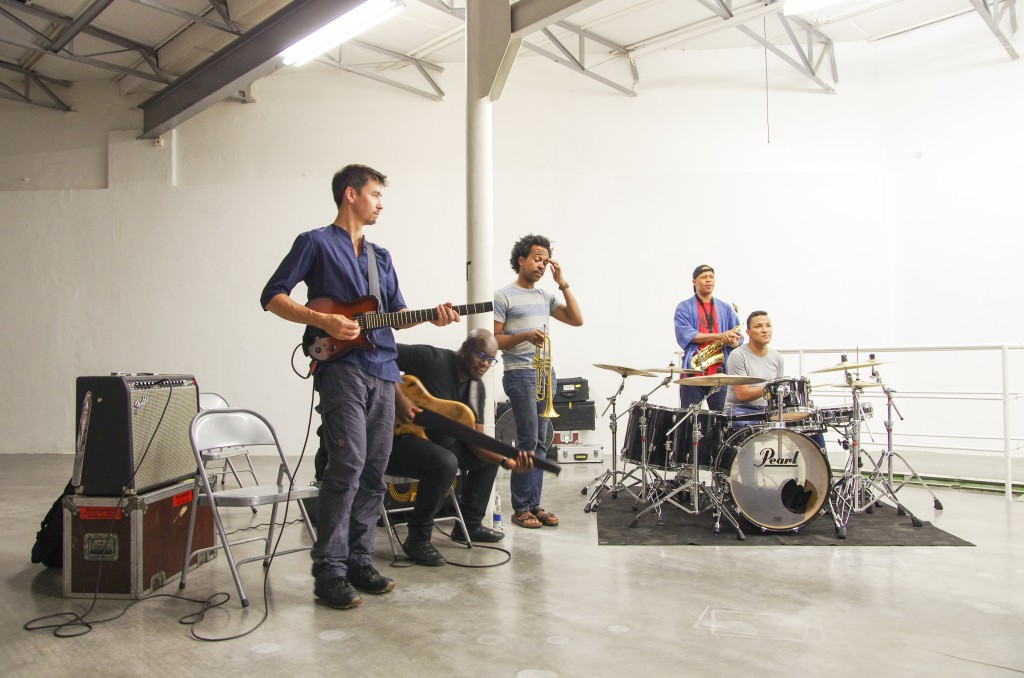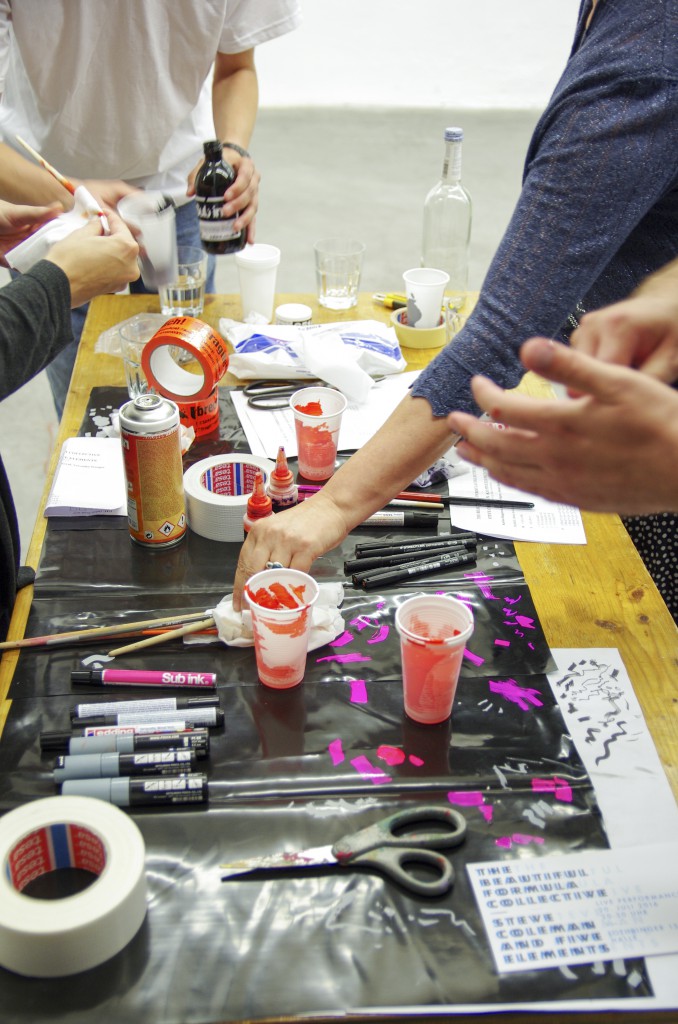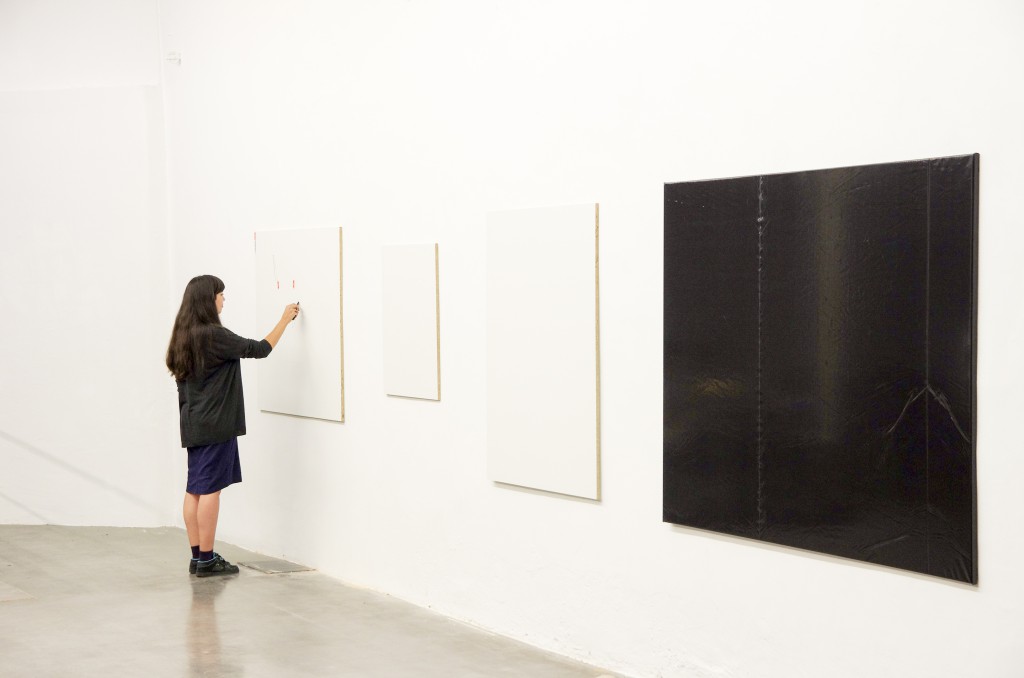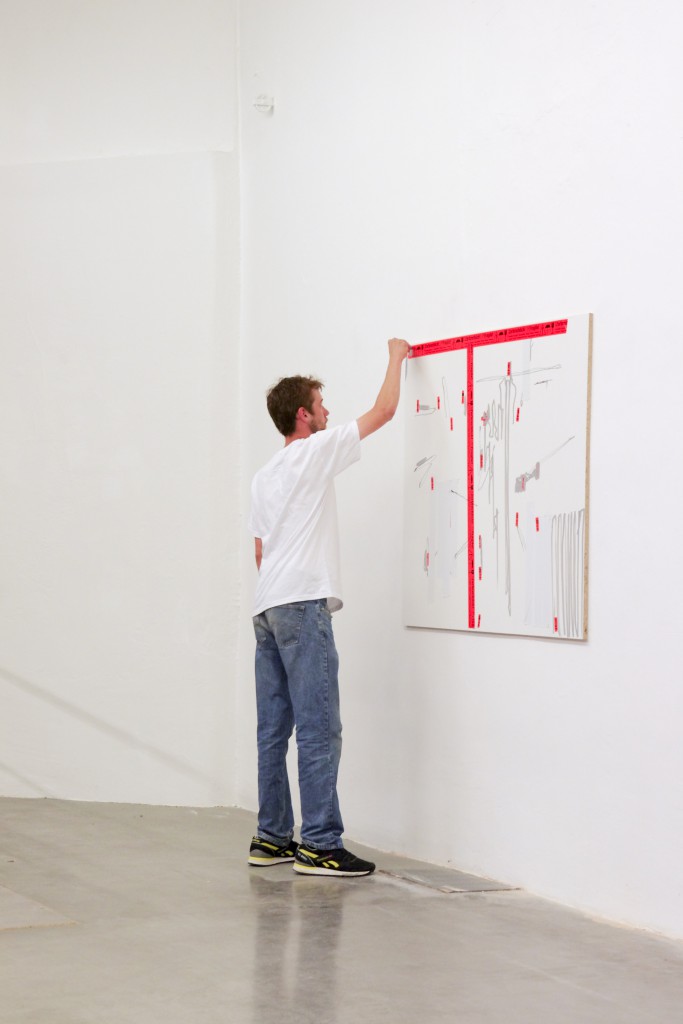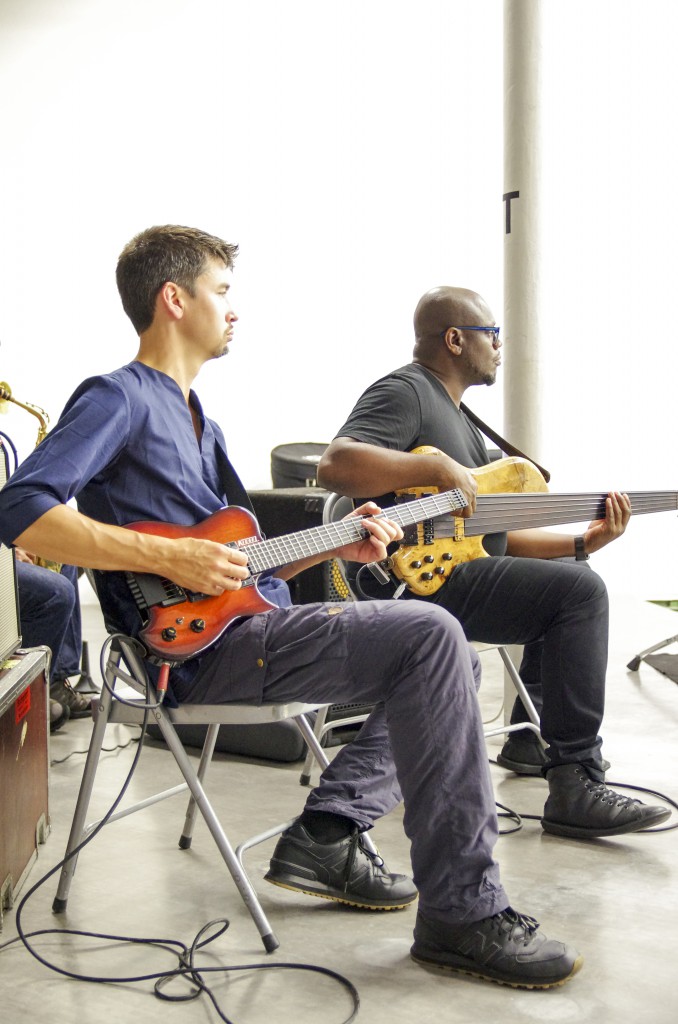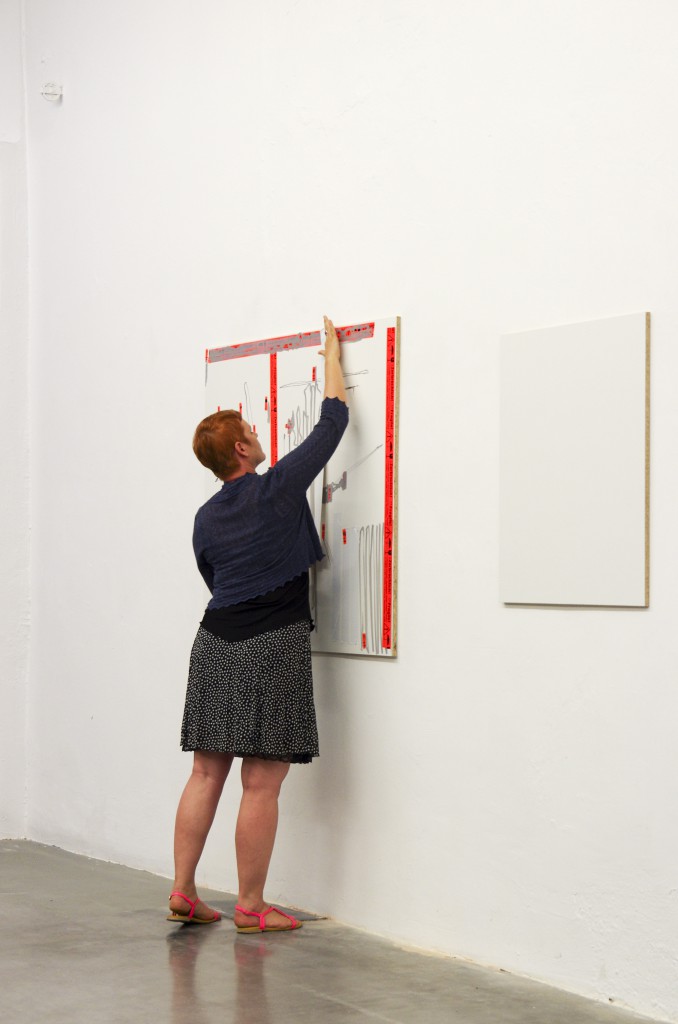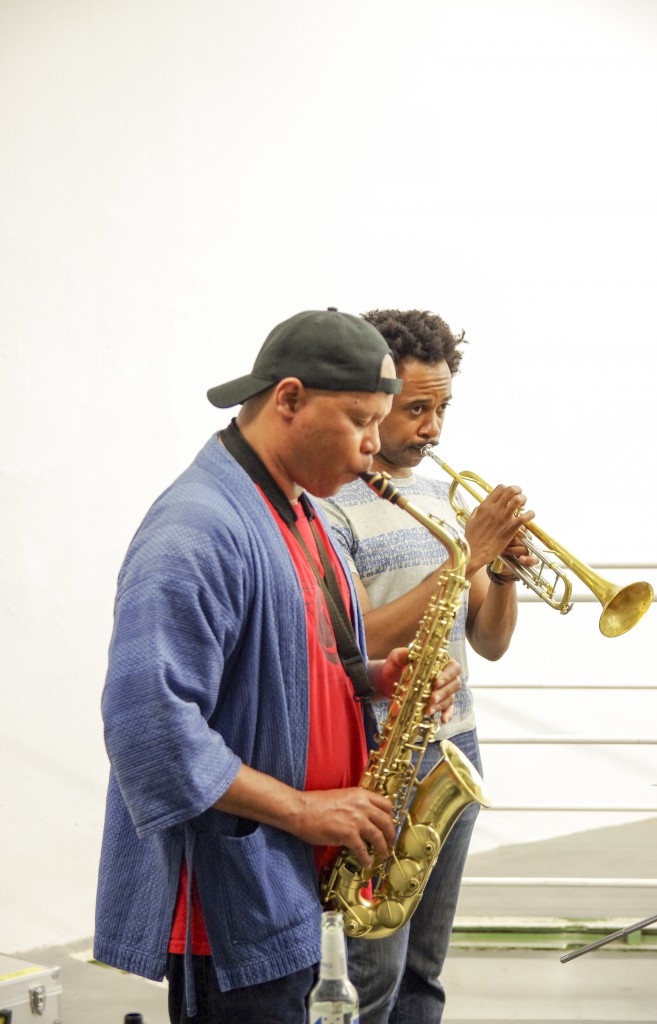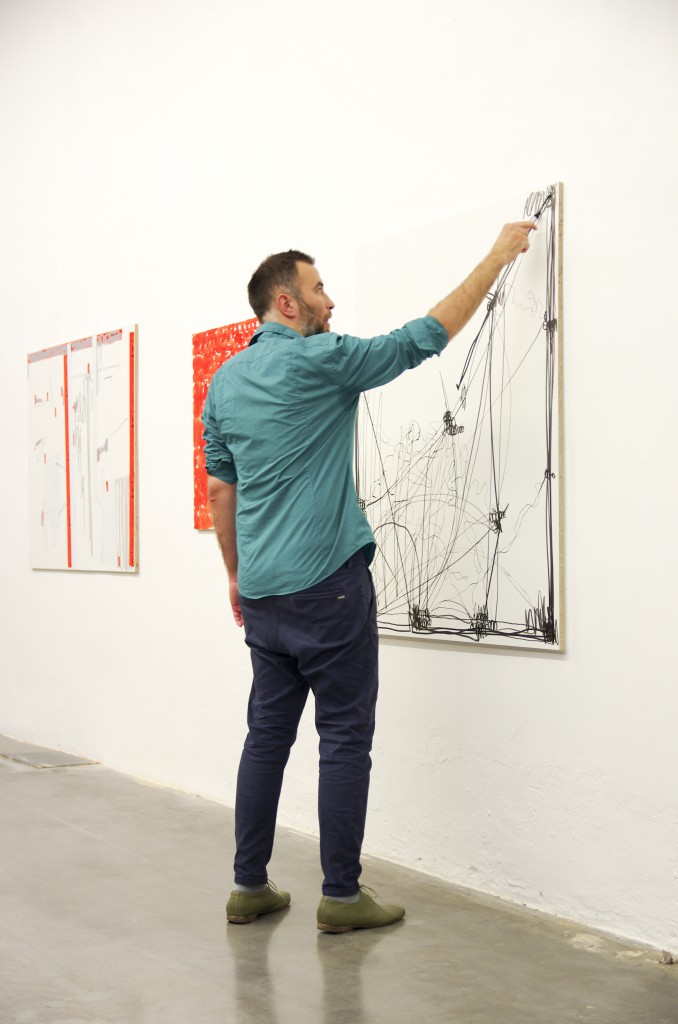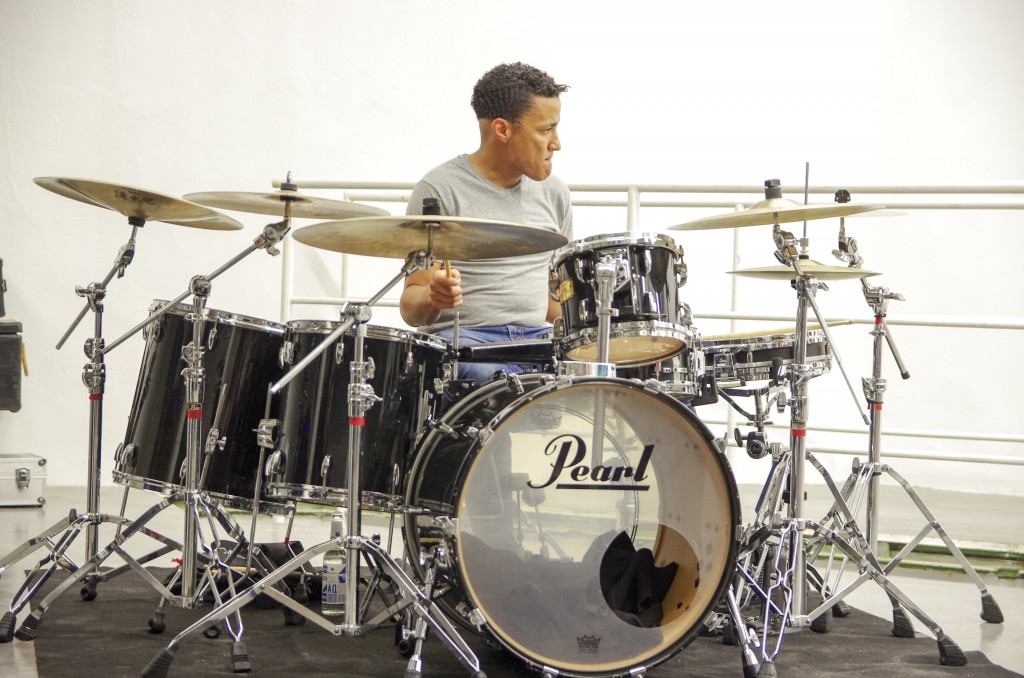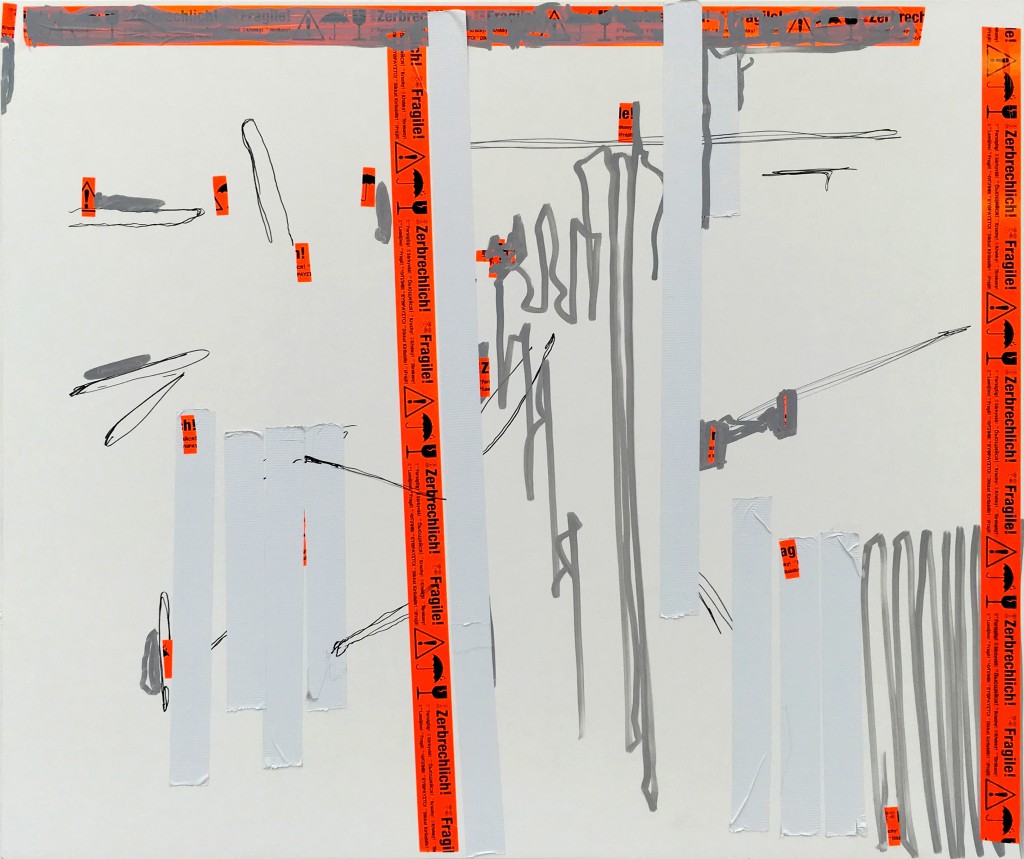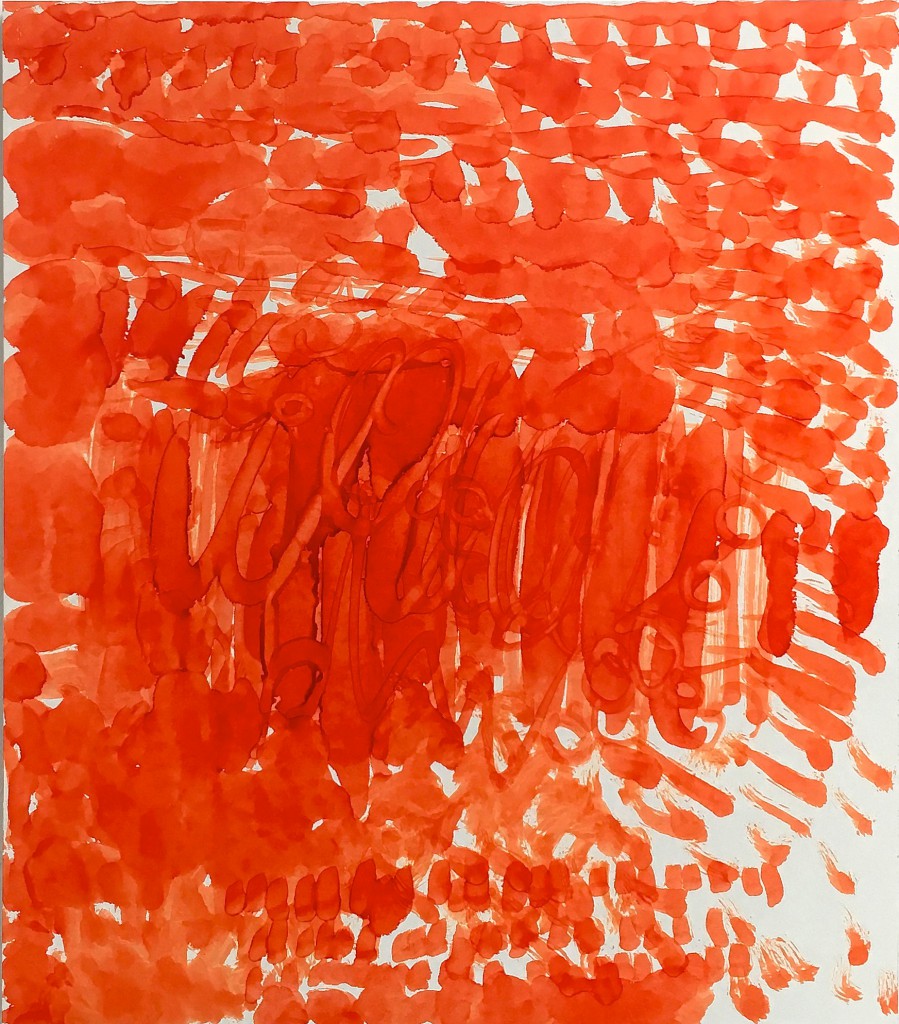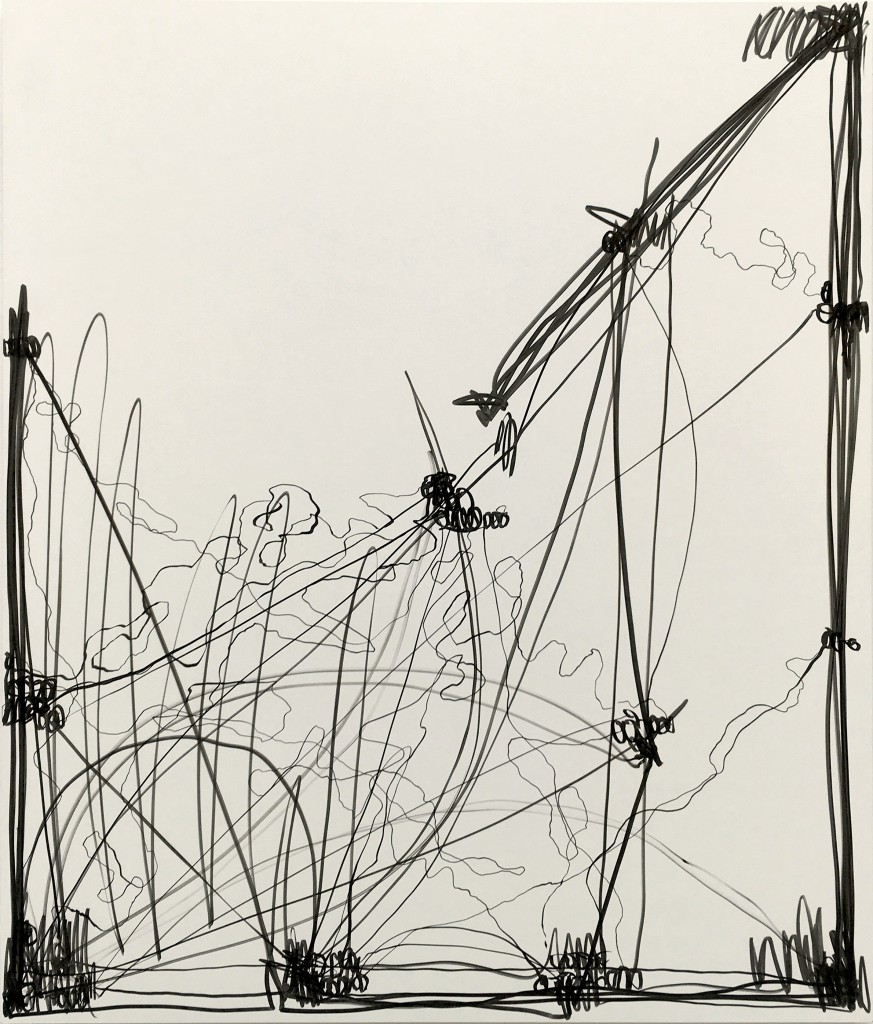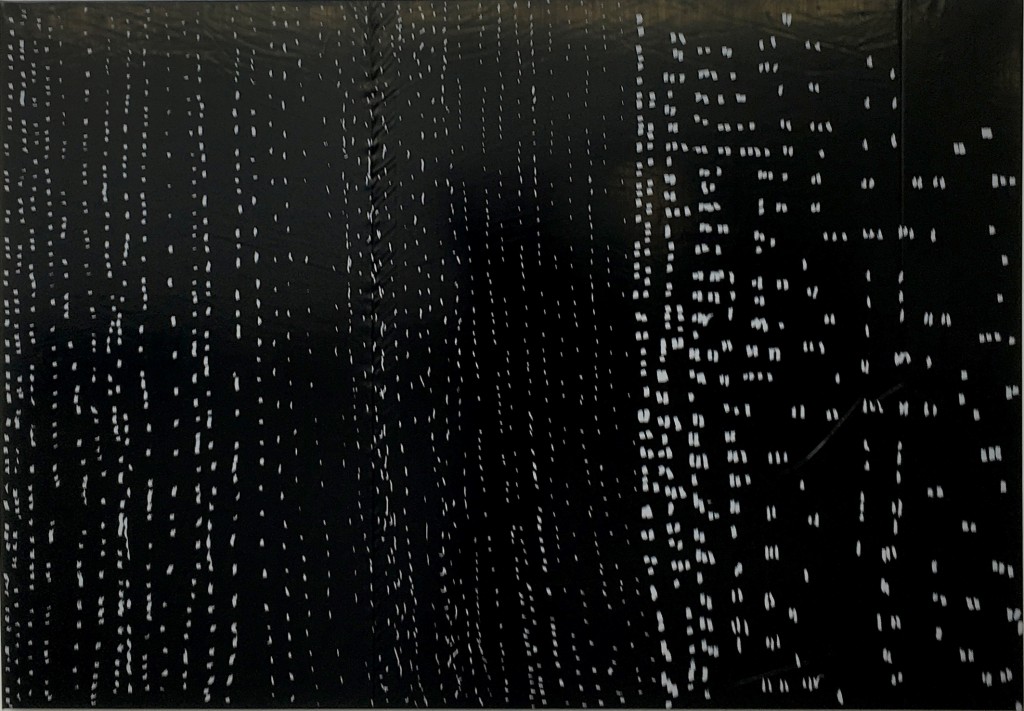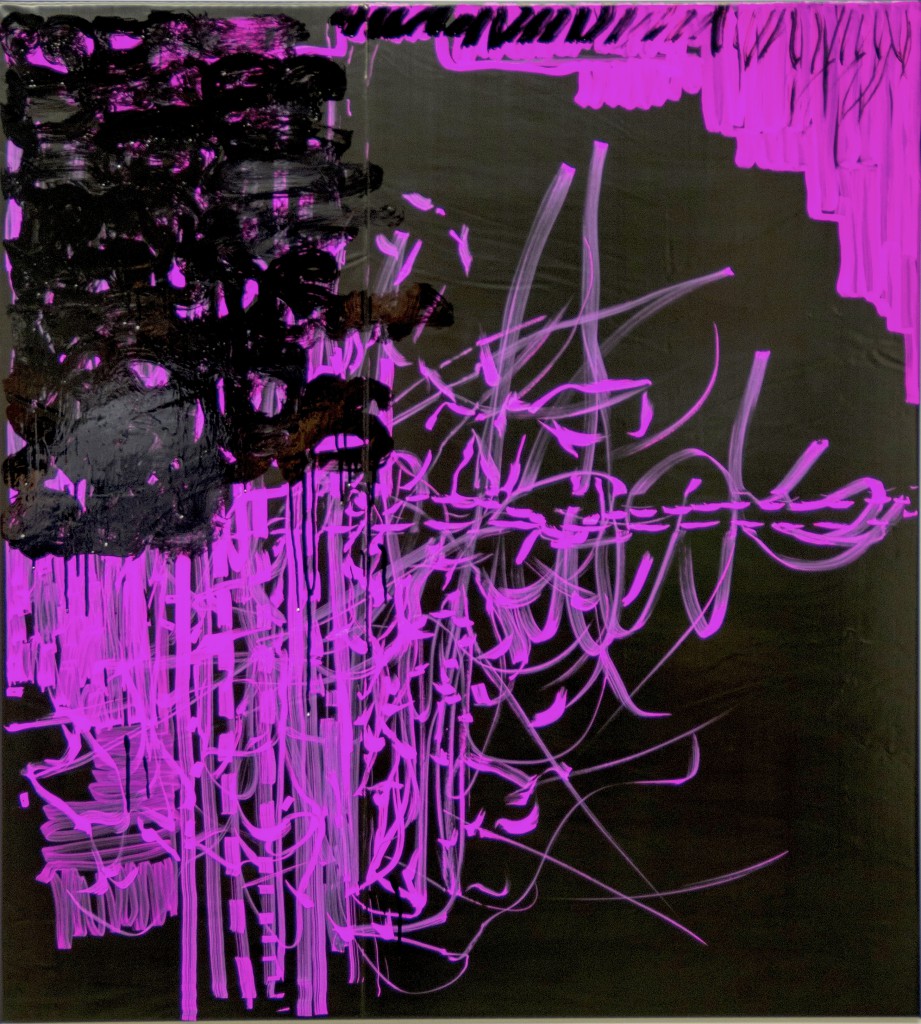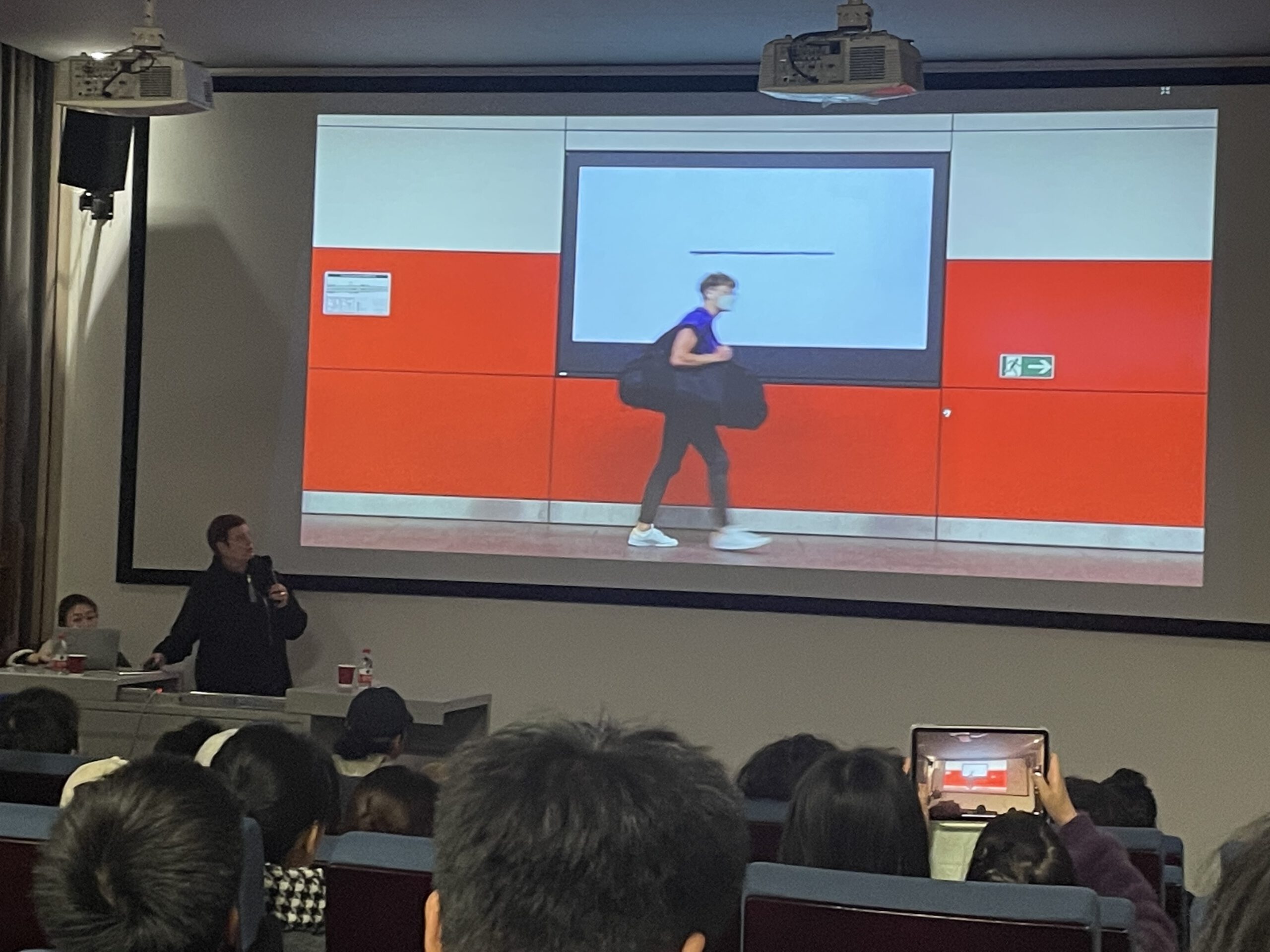
Veronika Wenger
Lecture at Guangzhou Academy of Fine Arts, December 18, 2023
Disegno
The divine nature […] that repeats all visible works
– Leonardo da Vinci
The line as a repetition of nature becomes an intermediate area in which it becomes nature itself through the repetition of nature, before it becomes decoration, drawing, symbol or language.
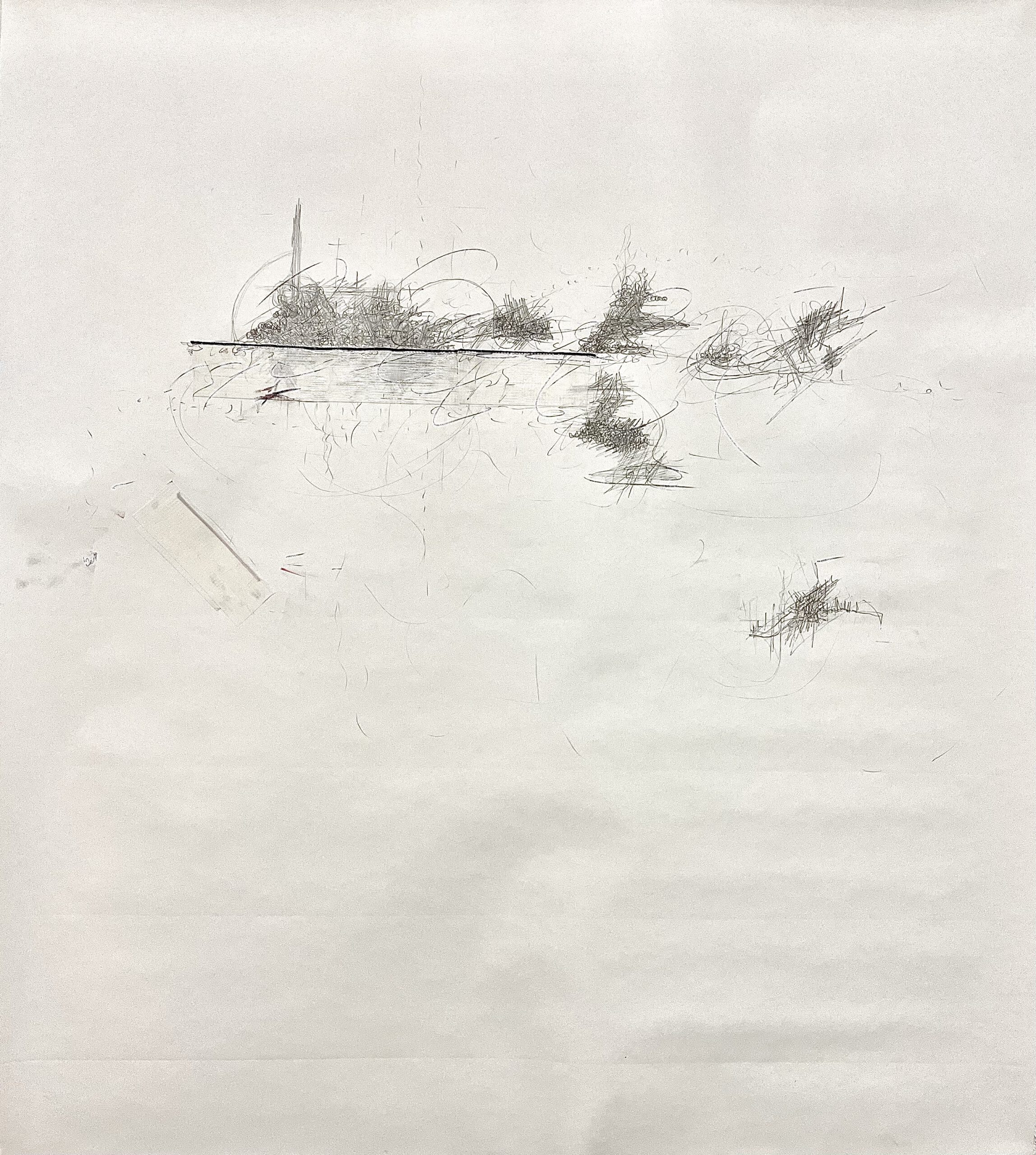
Veronika Wenger 2022
115 x 100 cm, marker, tape, pencil on paper
Using this bowl as an example, I can see the repetition of nature, the person who shaped this bowl and drew the line. She repeated nature, much like hands form a bowl to drink from, and I see the material, the earth and the color repeating the forms of nature. I see the unity of the person, the bowl and the line as a performative act that creates the bowl with this line as a repetition of nature and thus becomes a unity. This is lost the more the line becomes drawing, decoration, sign or narration.

Byzantine and Christian Museum, Athens
The line makes everything seen visible, the outlines of the bodies, the spaces in between, the „connecting of distinctions” (Bernhard Lypp). What the line makes visible as a line, painting makes visible by covering it with paint.

Veronika Wenger 2021
160 x 150 cm, marker, acrylic, pencil on paper
It is difficult for me to keep my lines on the outside, on the form and direction given by an apple, for example, or any object, or even space, landscape, etc. Since I gave in to the lines, to free them from the tensions, the direction, the form, they jump around on the page…
In painting, color has always been more important to me than space or object. Perhaps I have now also arrived at the material in drawing.
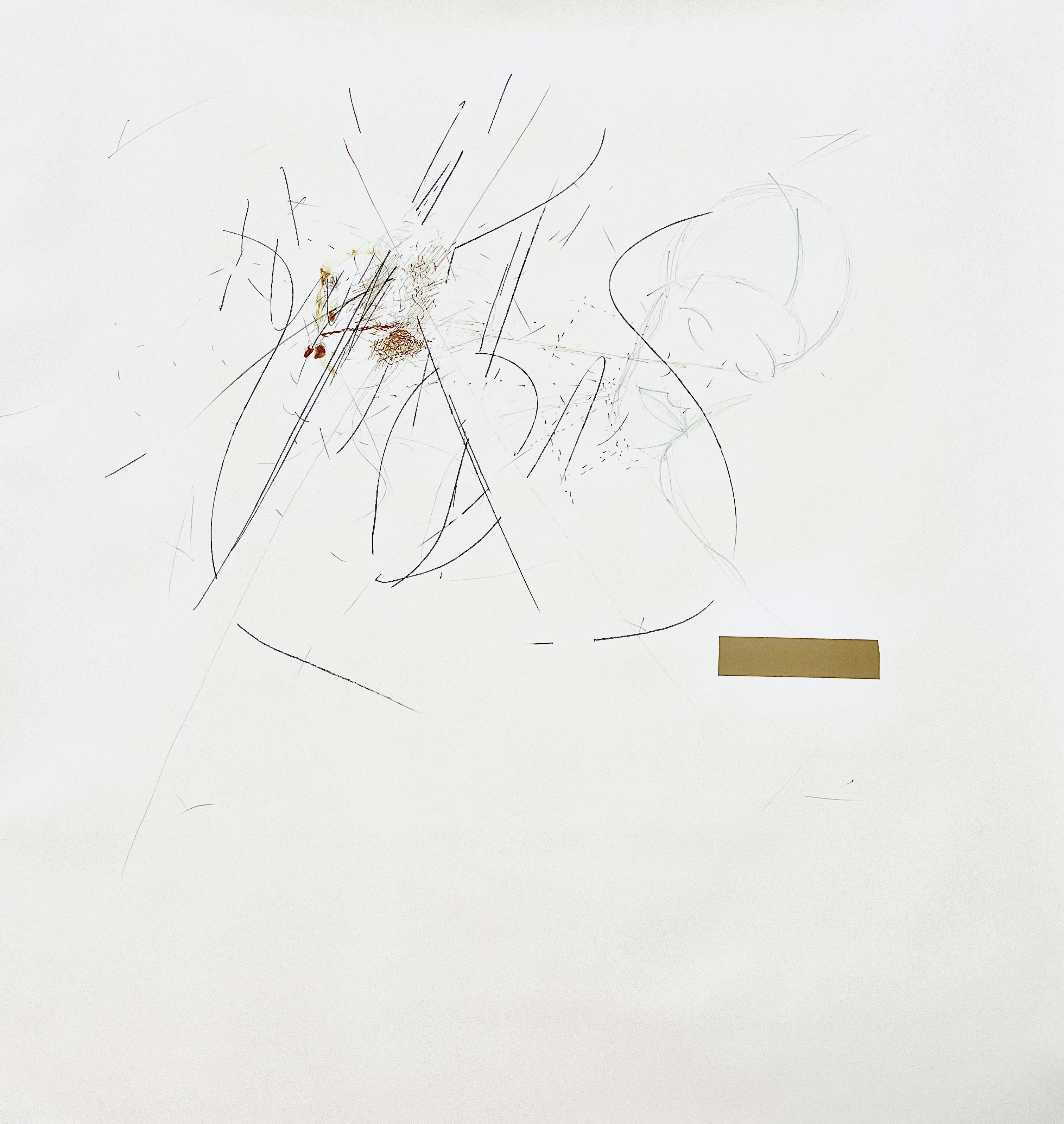
Veronika Wenger 2021
160 x 150 cm, marker, tape, pencil on paper
What does Disegno mean?
Since painting by necessity gave birth to perspective (perché l pittore è quello, che per necessità della su arte ha partorito essa prospettiva, § 17; 1500/05), to drawing in general, painting is a central science (“… for the divinity of the science of painting contemplates both human and divine works, which are delimited by their surfaces, i.e. the outlines of bodies …”, § 23; ca.1492 ); it is this also for the sculptor, the architect, the decorator, the goldsmith, for weavers and embroiderers; it has invented letters to express itself in different languages, numerals for arithmetic, figures for geometry; it teaches perspective, astronomers, cosmographers, craftsmen and engineers (§§ 23: ca.1492; 17: 1500/05; 25, 28: ca.1500).
– Leonardo da Vinci
Is the line/color divine when the drawer/painter turns around and looks at ideality?
The line/color is what the drawer/painter chooses by creating an order or a frame?
Does the line/color make an ideal appear? Or is the line/color an imitation, an artificial construct or decoration?
Disegno is:
Line, stroke – drawing.
Ornament – decoration.
Jewelry – symbol.
Writing – language.
Color – painting.
In all of this the line / color remains present
Disegno 1: Observation 1st order
Simple observation of nature:
Line, color as a unit of connecting of distinctions (nature)
Disegno as a line is a “connecting of distinctions” (Bernhard Lypp), a concatenation of distinctions. The connecting of distinctions can be made visible by drawing a line. The line here is the visualization of the “chaotic” world. The line corresponds to the visualization of a person’s seeing/perceiving. What is seen / perceived is shown in a drawn line. The line is the medium of the disegno, which marks – does not mark. The line is part of “nature”/“reality”/“world”, “cosmos”.
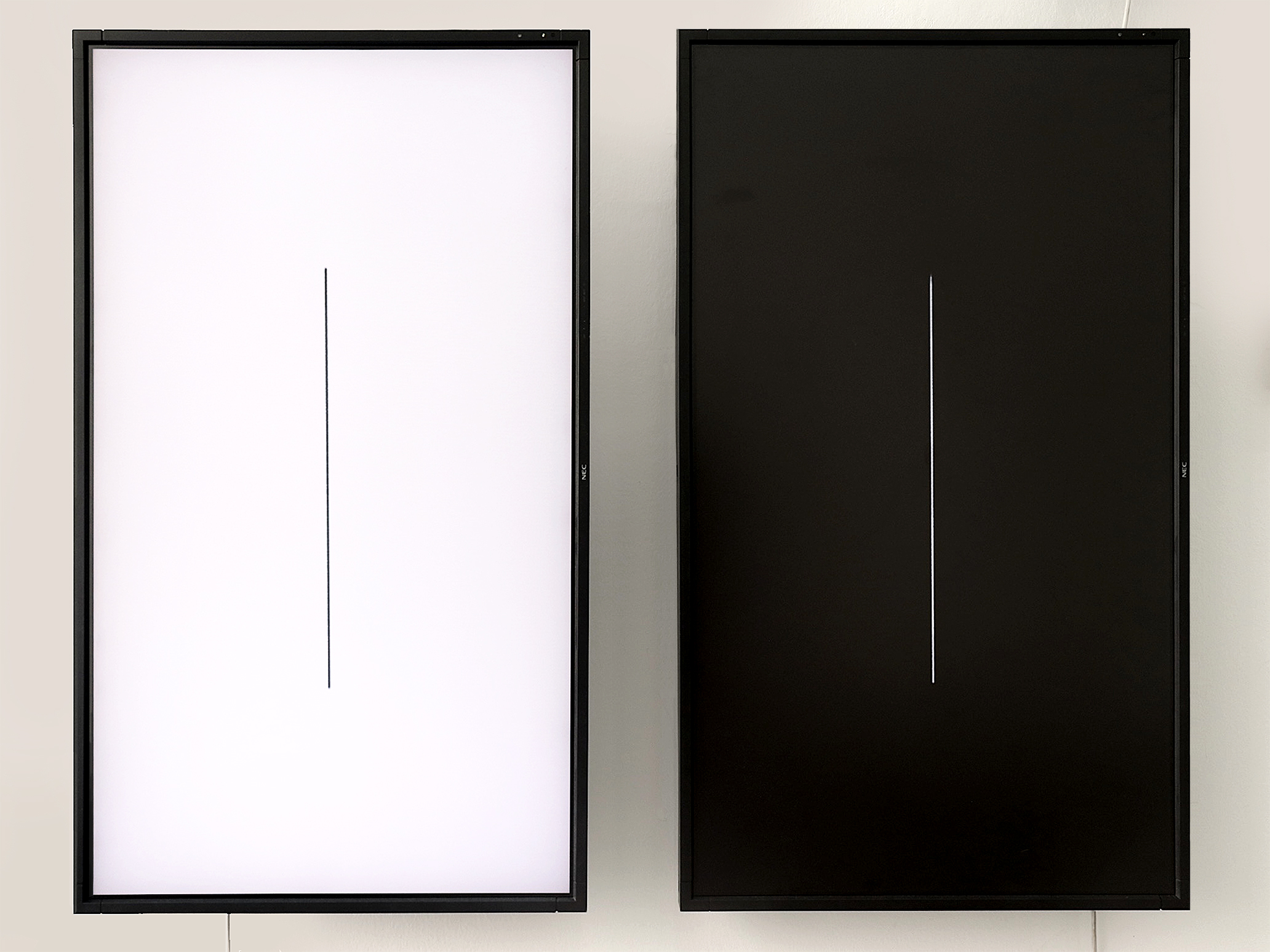
Veronika Wenger 2021
Digital drawing, Full HD
Disegno as color is a “connecting of distinctions” through the application of color. Distinctions can only be made visible by concealing them, by concatenating surfaces.
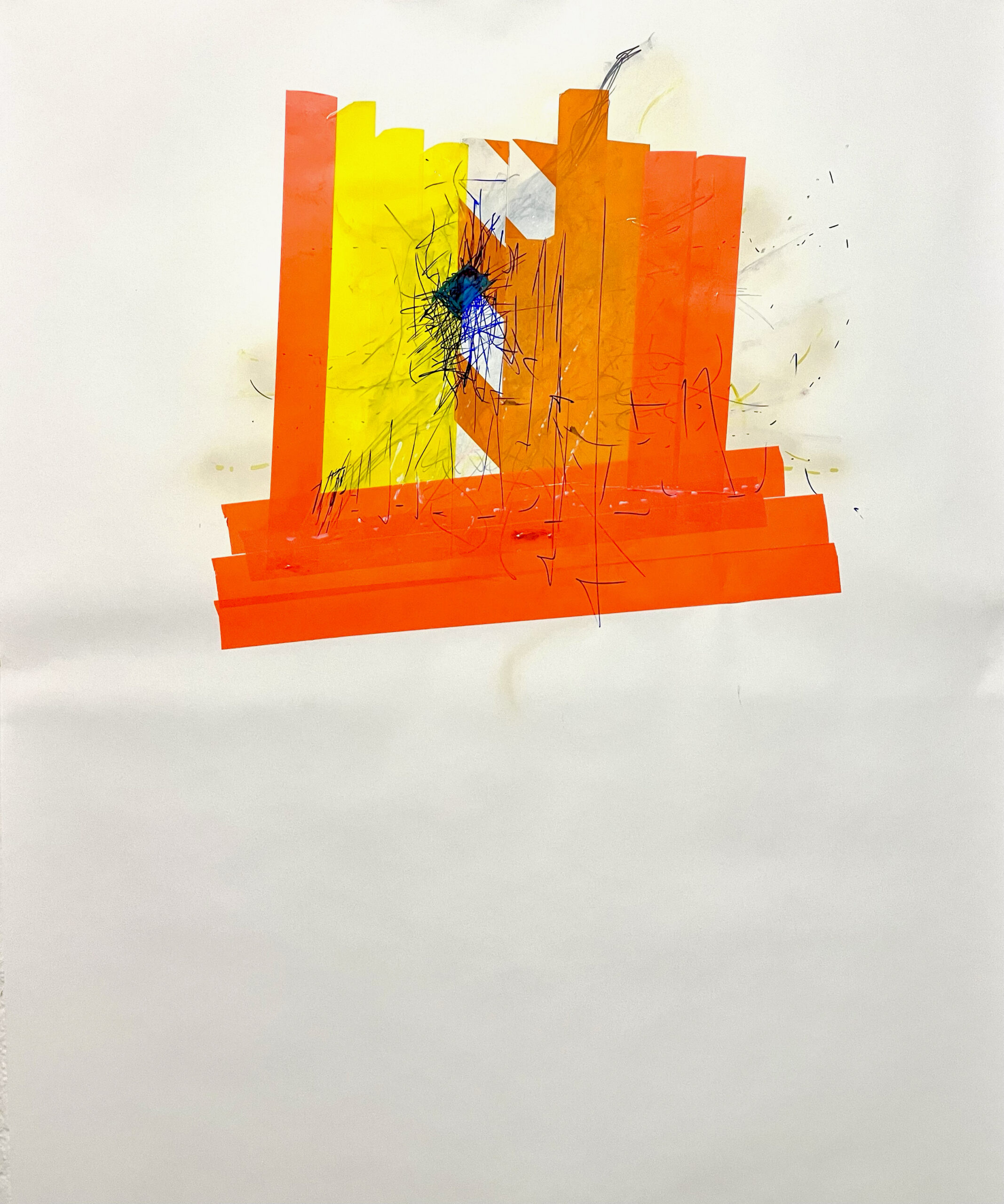
Veronika Wenger 2023
120 x 100 cm, spray, marker, pencil, tape on paper
Line and color approach or merge with each other. By drawing the line and “applying color through movement” (Oleksiy Koval), distinctions become visible, “marked – unmarked” (Spencer Brown).
Disegno as ornament is a repeating line/color and ordering factor.
Ornament is order. The origin of ornament is disegno as line/color, infinite line and infinite color.
Color becomes ornament by covering/filling the spaces in between. The connecting of colors divided into distinctions makes the ornament visible.
Ornament corresponds to observation/systematization.
Disegno here is not the imitation of nature, but nature as form, ordered / seen as repetition: as ornament that makes the cosmos visible through line or color.
Disegno as an ornamental connection of distinctions. “The ornamental line is part of nature”. (Niklas Luhmann)
Does the ornament form a frame for the exclusion, e.g. for the white sheet or canvas?

Oleksiy Koval, 2019
140 x 130 cm, ink on synthetic textile
If one takes the theory of the combination of forms as a starting point, then it is obvious to assume in conditions where there is no corresponding concept, let alone an autonomous art system, that the origin of art lies in ornament. One could venture a comparison: what the evolution of language meant for the evolution of society is the evolution of the ornamental for the evolution of the art system; in both cases, long-lasting preparatory work with ultimately eruptive consequences once communication is so secure in itself that boundaries become recognizable. But initially it is not the difference between thing and ornament that is emphasized, but precisely the unity, the emphasis on meaning. “Cosmos” in the Greek understanding is
both order and decoration.
– Luhmann, “Art as a Social System”
Disegno as jewelry can be a cut-out ornament or an ornament cast in a form, which can be a line, symbol, sign or color. If the ornament is detached from the connecting of distinctions and artificially repeated, it becomes decoration. The ornament is transferred to the world of signs, writing and symbols.
Disegno as jewelry can be a cut-out ornament or an ornament cast in a form, which can be a line, symbol, sign or color. If the ornament is detached from the connecting of distinctions and artificially repeated, it becomes decoration. The ornament is transferred to the world of signs, writing and symbols.
Disegno 2: 2nd order observation
The observation that observes itself:
Drawing, Painting, Drawing a distinction, Making decisions, marked / unmarked
Disegno as drawing and painting.
Drawing and painting create a surface that conceals or covers “nature” in order to allow it to emerge anew through reason and a certain selection of distinctions, which becomes communication about drawing/painting through its own language, a system of signs. Disegno in the sense of making decisions, marked / unmarked. Drawing is the performative stroke, painting the performative application of color or the representation of appearance or idea.
On the surface, the disegno can appear as color or line, in the sense of ornament and the eye. Or as an eruption of line or color as drawing, painting, image, imitation, which replaces what is seen through the imagination of a person. The drawing, painting becomes a projection surface and interruption of the ornament. The surface itself becomes a distinction in the unity of the ornament / cosmos and is absorbed into the surrounding frame (nature).
In this, in the term drawing, the outline, the disegno, the tradition of the ornamental is continued.
– Niklas Luhmann
Is the performative stroke, the performative application of color, the infinite line, the infinite color, the disegno of the depictive perception of the eye?
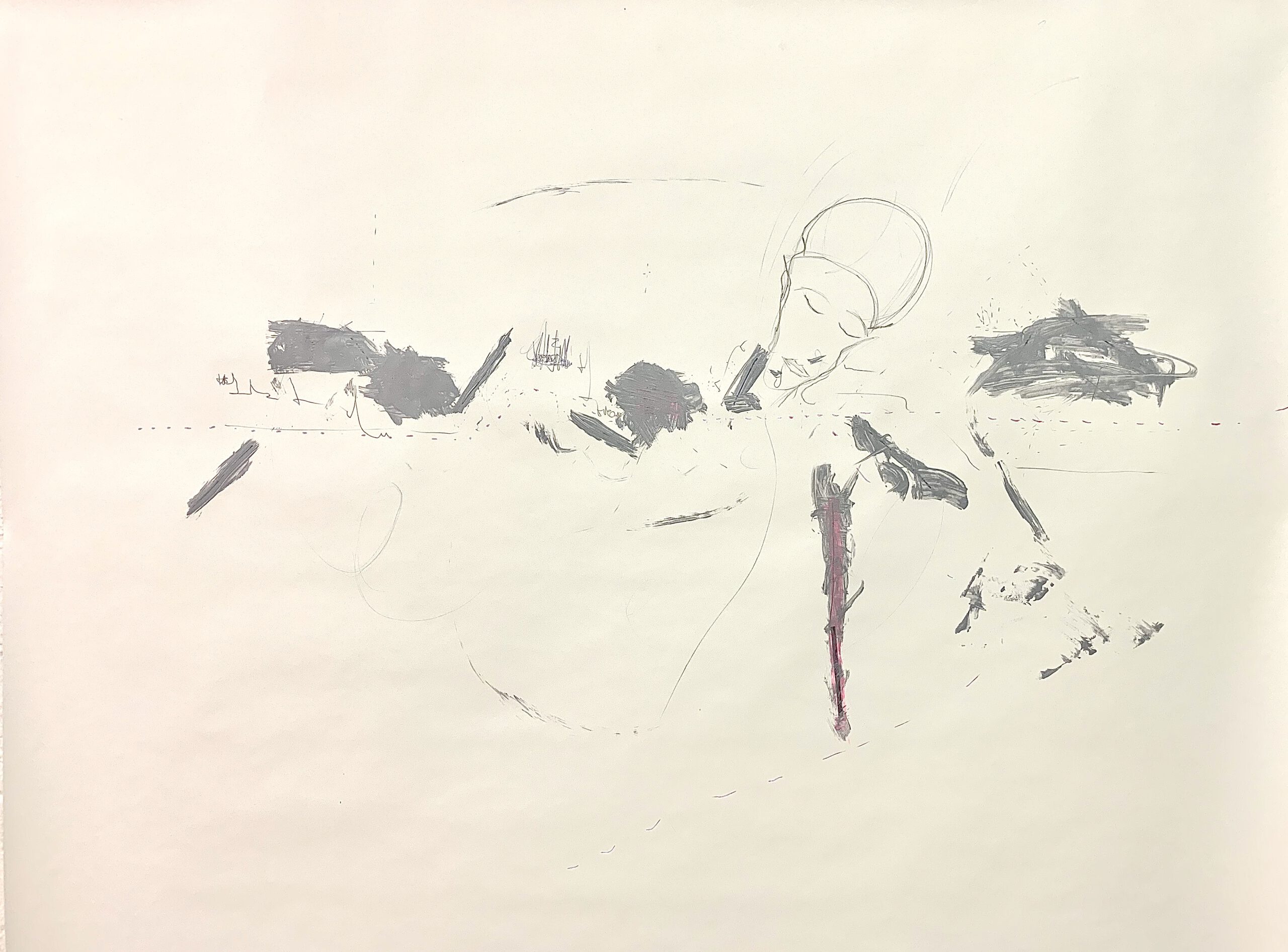
Veronika Wenger 2020
120 x 150 cm, acrylic, marker, pencil on paper
Painting and drawing converge or merge through the use of line and color. The tracing and application of color of distinctions through the movement of drawing the line and applying the color become Disegno 2.
As part of the whole, the surface / canvas again becomes part of the ornament.
The ornament forms the frame for the section of the drawing or painting.
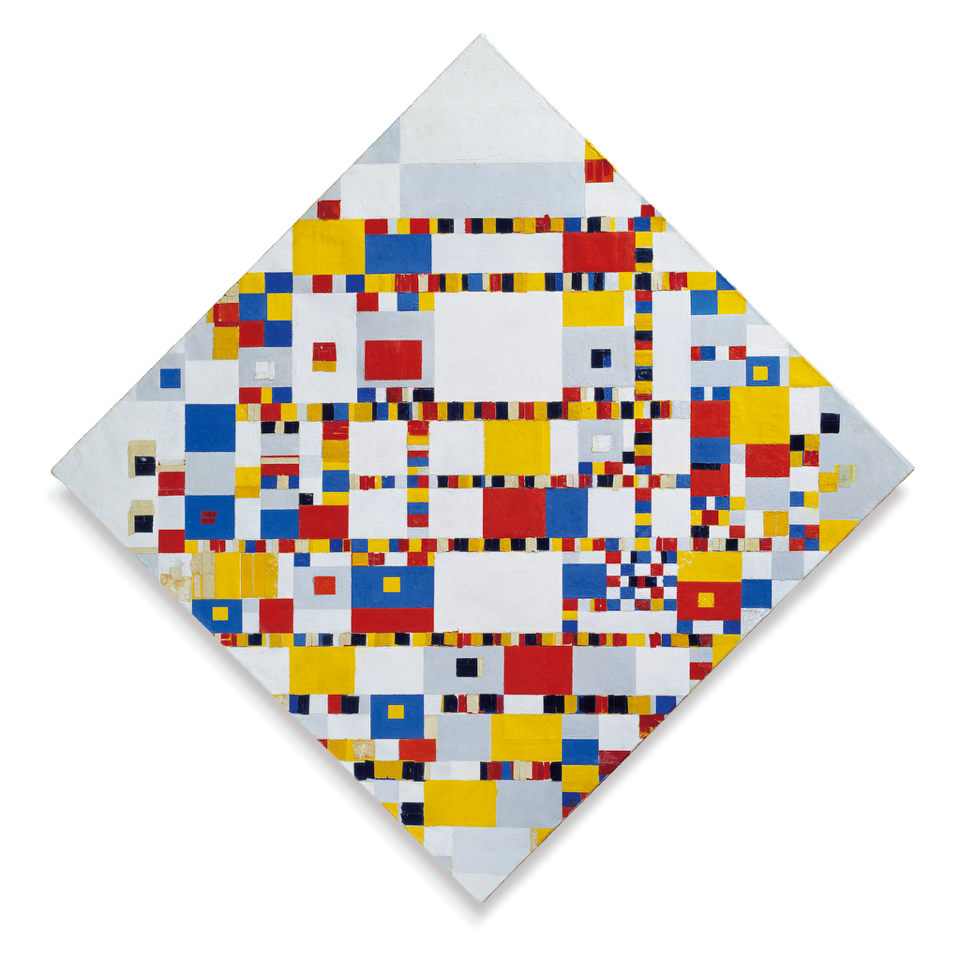
Piet Mondrian, 1942 – 1944
Mondrian paints distinctions as surface on surface and thereby makes the ornament, the world, visible. “Victory Boogie Woogie” is Disegno (nature, cosmos, eye), a unity of painting and ornament, in the sense of “cosmos”. The search for the “right color on color” as an ordering ornament, as a necessity rooted in the cosmos.

Paul Cézanne c.1906
Cézanne creates the disegno (nature, cosmos, eye) through the sequence of color, chain of distinctions through color. He arranges the nature he sees through color, color on color, applying color instead of drawing a line. It becomes ornament, reality through color.
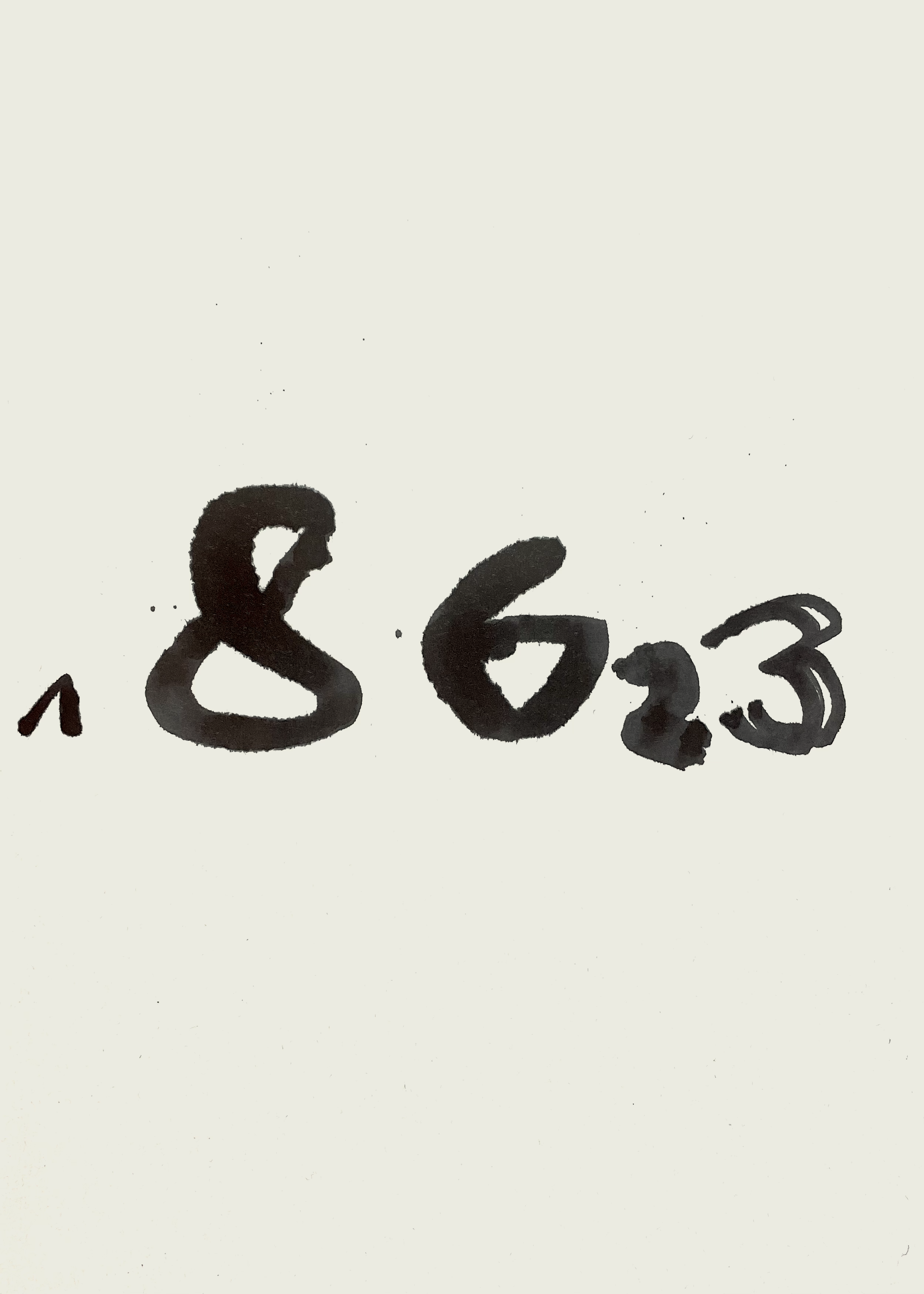
Oleksiy Koval, 2023
297 x 210 mm, ink on paper
Oleksiy Koval arrives at disegno (nature, cosmos, eye) by recognizing the system. The application of color to the surface, composition, numbers, rhythm and movement becomes the order of things, an ornament.
Disegno 3: 3rd order observation
Observation translates and transports into systems as
design, image, writing, language, picture, narration

Il Guercino, 1640; Getty Center
Drawing is also the design, realization of the imagined world or the imitation of the visible or the creation of an artificial world. Drawing thus corresponds to communication.
Here begins the imitation of nature, the image of nature, the representation of appearance instead of form and color, writing in pictures, the beginning of the narrative. Communication, pictures, storytelling, detach themselves from the context of the ornament to their own language and writing.
Disegno as line and drawing includes
1. the unity of connecting of distinctions (as nature, as cosmos)
2. drawing a distinction, marked/non marked, drawing
3. language, writing, image
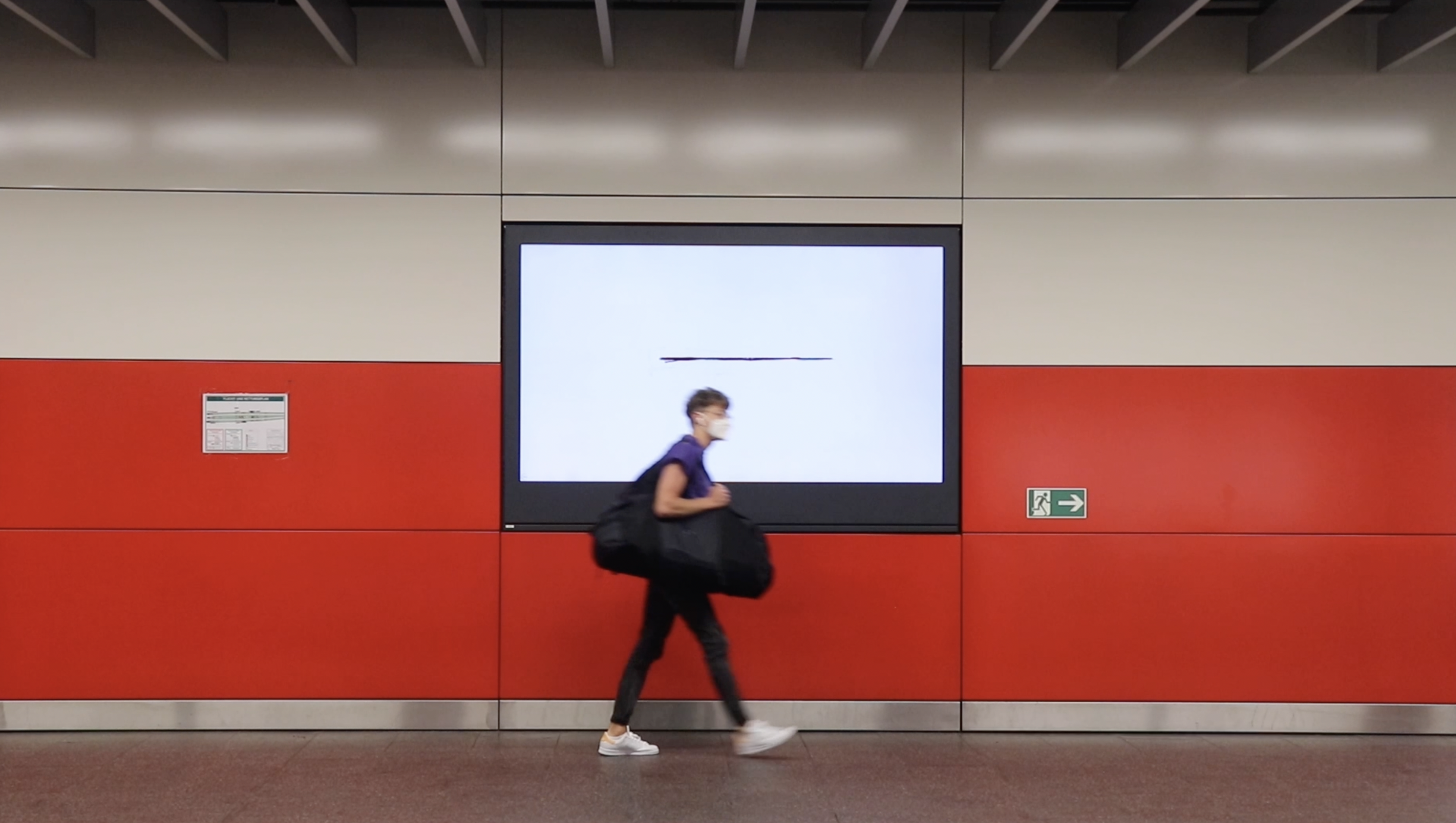
Veronika Wenger 2020
Digital drawing, Central Station Munich 2021
The more the line is not abstract, even becomes a stroke, the more the curtain is pulled away and reveals a view of reality. It makes the communication between line and stroke visible and opens the viewer’s eyes to the world.
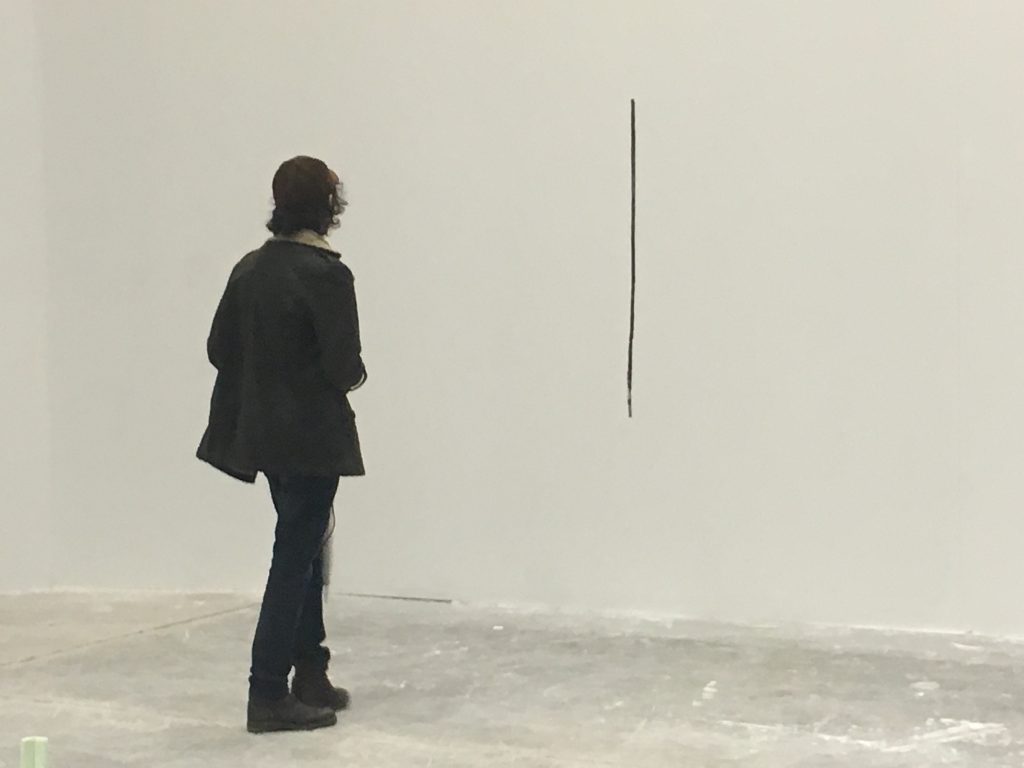
Veronika Wenger 2017
Istanbul Art Fair Tüyap
The more depictive a line is, becoming a drawing, the more artificially and artistic it becomes. It places a veil over reality through which the viewer sees the world.
Veronika Wenger
Munich, December 8, 2023


